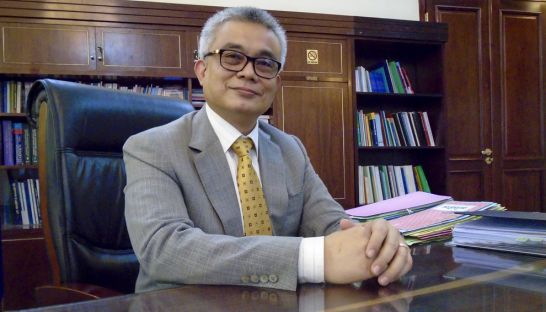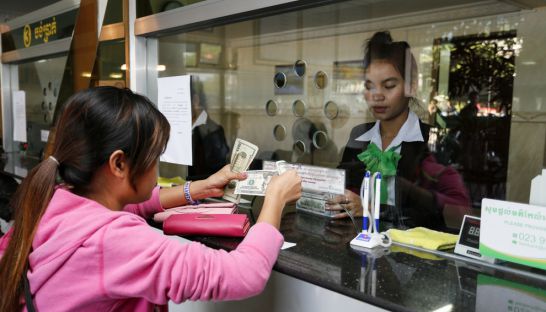Minister of Economy and Finance talks 2016 budget
Minister of Economy and Finance talks 2016 budget
The National Assembly passed the government’s $4.3 billion budget for 2016 this week, which includes a plan to take on nearly $1 billion in foreign debt. The Post’s Siv Meng sat down with Aun Porn Moniroth, Minister of Economy and Finance, to discuss the revenue and expenditure allocations of the 2016 budget.

Why did the government increase expenditure in the 2016 budget, and what are its sources of revenue?
On Monday, the National Assembly ratified a draft of the national budget for 2016. In this draft, if you look under the part about expenditure, you can see that there’s an increase of 16.5 per cent compared to the 2015 budget. This increase is the result of the government’s efforts to collect more taxes.
We were aiming to increase state revenue by 0.5 per cent of GDP, but now it’s set to increase by almost 2 per cent of GDP compared to 2015.
State revenue has increased because we tried our best to improve revenue collection, and this has also increased the income for our nation. The increase in revenue means that the government has more funds to invest in the country’s development, and makes the government more financially independent.
The increase in revenue helps increase our total national budget, and subsequently, and if we look back to 2009-2010 budget, the total deficit of our national budget was 7 per cent of GDP, but it has now gone down to only 4 per cent. If the deficit of our national budget is reduced, it means our economy is growing and our financial capability is also increasing, making us even more independent and allowing us to avoid borrowing from the other countries.
What are the priority sectors of the 2016 budget?
I want to emphasise that the budget is the government’s tool to implement policies and provides a financial means to carry out the various policies stated in the government’s political program. Therefore, the budget has to serve the government’s policies, and the policies for this fifth legislature have been clearly written in a number of important documents; the most important being the third phase of the Rectangular Strategy.
The government has outlined a five-year national development plan with the purpose of implementing prioritised policies stated in its policy program. The budget allocations serve some of Prime Minister Hun Sen’s major policies: roads, water, electricity and people. The prime minister always said those four priorities are vital and long-term, but how any priority switches to being the first, the second, or the third depends on the actual circumstance and needs within each legislature.
In this legislature, the people are considered to be the first priority, though that does not mean roads, water, and electricity are not important. They are important, but people come first.
What does putting people as first priority really mean?
There are two facets to this. One is that we focus on improving the people’s livelihood and the productivity of civil servants of all levels and ranking, especially those with low salaries by providing raises to all government officers and members of the Armed Forces. The second is that we focus on building the nation’s human resources, which are deemed vital for implementing the government’s policies.
With this in mind, the government focuses on three main ministries: the Ministry of Education, Youth and Sport, the Ministry of Labour and Vocational Training, and the Ministry of Health. We put high priorities on these ministries in our systematic expense.
Basically, the social sector has been prioritised since 2013. The increase in this systematic expense can be seen through the data in proportion to the GDP. In 2013, the social sector, including the three main ministries, received a budget of 4.2 per cent of GDP. This number has increased, and the 2016 budget shows it at 5.2 per cent of GDP.
How are the expenditures for investment allocated?
We are focusing on sectors that support economic growth, including roads, water and electricity. This means that the investment budget – both the government’s resources and funding from other countries – is used mainly on those three prioritised sectors.
The remainder of the budget will be divided among other sectors such as education, healthcare and local transportation that serve social development. But for investment, we focus on sectors that contribute to increasing the productivity of the economic sector, as well as some other sectors that play a role in directly improving people’s livelihood, for instance, electricity. The government puts effort into providing electricity and cutting its cost.
What percentage of GDP will the government spend on the four prioritised sectors: roads, water, electricity and people?
The total investment expense is about 7 per cent of GDP.














